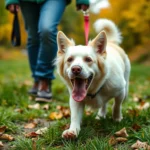
Introduction
As dog owners, we often marvel at the various dog sleeping positions our furry companions adopt while they rest. Understanding these positions is not just a matter of curiosity; it can provide valuable insights into a dog’s mood, health, and overall comfort. Just like humans, dogs have unique ways of expressing their feelings and state of well-being through their sleeping habits.
In this comprehensive guide, we will delve into the significance of observing your dog’s sleeping positions, explore the most common positions, and discuss the factors influencing these habits. We will also outline what certain positions may indicate about your dog’s health and how you can create a comfortable sleeping environment for them.
The Importance of Dog Sleeping Positions
Observing your dog’s sleeping positions can serve as an essential tool for understanding their health and personality. Just as a person might curl up in bed when feeling cozy or stretch out when relaxed, the way a dog sleeps can be indicative of their emotional state and physical condition.
Indicators of Health and Well-being
Certain dog sleeping positions can signal whether your dog is feeling good or if something might be amiss. For instance, a dog that usually sprawls out comfortably may be feeling unwell or anxious if they suddenly begin sleeping curled up.
Understanding Your Dog’s Personality
The sleeping position can also reflect your dog’s personality. A confident dog may sleep on their back, exposing their belly, while a more insecure dog might curl up tightly. Observing these habits can help you understand your dog’s temperament and how they interact with their environment.
Connection Between Sleeping Positions and Dog Breeds
Different breeds may exhibit unique sleeping patterns. For example, smaller breeds often prefer to curl up due to their size, while larger breeds might stretch out more. Understanding these breed-specific tendencies can further enhance your insight into your dog’s sleeping behavior.
Common Dog Sleeping Positions
The Curled Up Position
One of the most common dog sleeping positions is the curled-up position. In this pose, dogs tuck their legs and tails close to their bodies, resembling a small ball.
Interpretation: This position often indicates that a dog is feeling safe and secure. It provides warmth and protection, making it a natural choice for a dog seeking comfort.
The Side Sleeper
In the side sleeper position, a dog lies on their side with legs stretched out.
Interpretation: This position suggests that a dog is comfortable and trusts their environment. It indicates a lower level of alertness and a state of relaxation, showcasing that the dog feels safe enough to sleep deeply.
The Belly Up Position
A dog that sleeps with its belly exposed is said to be in the belly-up position.
Interpretation: This position signifies ultimate relaxation and trust. While it may seem vulnerable, dogs who sleep this way are often in a state of complete comfort, showing that they feel secure in their surroundings.
The Superman Position
In the Superman position, dogs lie flat on their stomachs with their legs stretched out behind them, resembling Superman ready to take flight.
Interpretation: This playful position often indicates high energy and a playful mood. Dogs may adopt this position when they are feeling particularly energetic or ready to spring into action.
The Fetal Position
When dogs curl up tightly on their sides, resembling a fetus, they are in the fetal position.
Interpretation: This position can indicate that a dog is seeking comfort or feels insecure. It may be a sign of anxiety or a desire for warmth and protection.
The Leaning Position
In the leaning position, a dog rests against a person or an object while sleeping.
Interpretation: This position reflects affection and attachment to their owners. Dogs that lean against their humans while sleeping are often seeking closeness and reassurance.
Factors Influencing Dog Sleeping Positions
Breed Differences
Each dog breed has its unique characteristics, which can influence their sleeping habits.
- Small Breeds: Breeds like Chihuahuas and Dachshunds often curl up due to their size and instinctual behaviors.
- Large Breeds: Breeds such as Great Danes may stretch out due to their size, often taking up more space when they sleep.
Understanding these breed differences can help you anticipate your dog’s sleeping preferences.
Age and Health
As dogs age, their sleeping positions may change. Older dogs may seek more comfortable positions due to arthritis or other health issues. Conversely, puppies often sleep in various positions as they grow and develop.
Health Issues: Specific health problems may lead to unusual sleeping behaviors. For instance, a dog with joint pain might avoid lying in certain positions that exacerbate their discomfort.
Environmental Factors
The environment plays a significant role in a dog’s sleeping positions.
- Temperature: Dogs may curl up in colder weather for warmth or stretch out in warmer temperatures.
- Surroundings: A quiet, safe environment can encourage deeper, more relaxed sleep, whereas a noisy or stressful area may cause a dog to adopt more defensive sleeping positions.
Creating a comfortable sleeping area for your dog can greatly influence how they rest.
What Your Dog’s Sleeping Position Says About Their Health
Signs of Stress or Anxiety
Certain dog sleeping positions can indicate stress or anxiety. For example, a dog frequently sleeping in a tight ball may be experiencing insecurity or fear.
What to Do: If you notice changes in your dog’s usual sleeping habits, it may be worth investigating underlying causes of stress. Consider consulting a veterinarian or a dog behaviorist for professional advice.
Signs of Pain or Discomfort
Unusual sleeping positions can also be a sign of pain or discomfort. If your dog suddenly changes their sleeping position or shows signs of distress while sleeping, it may be time to consult a veterinarian.
When to Consult a Veterinarian: If your dog displays signs such as whining, difficulty getting up, or reluctance to lie down, these could be indications of underlying health issues that require attention.
How to Create a Comfortable Sleeping Environment for Your Dog
Choosing the Right Bed
Selecting the right bed is crucial for your dog’s comfort. Consider the following features:
- Size: The bed should accommodate your dog’s sleeping position comfortably.
- Material: Look for supportive materials that cater to your dog’s age and health needs.
For example, older dogs may benefit from orthopedic beds that provide extra support for their joints.
Ideal Sleeping Spaces
The location of your dog’s sleeping area can greatly affect their sleep quality.
- Indoors vs. Outdoors: Depending on your dog’s breed and habits, they may prefer sleeping indoors where it’s warm and safe or outdoors where they can enjoy nature.
- Quiet Areas: Ensure your dog has a quiet, safe space free from disturbances. This fosters a more restful sleep environment.
Fun Facts About Dog Sleeping Positions
Did you know that dogs can sleep for up to 12-14 hours a day? Their sleeping habits are influenced by their age, breed, and activity level.
Additionally, studies show that dogs dream just like humans, often exhibiting twitching and vocalizations during REM sleep. Cultural references about dogs sleeping often reflect the bond between dogs and humans, showcasing their importance in our lives.
Conclusion
Understanding your dog’s sleeping positions is more than just an interesting observation; it can provide insights into their health, comfort, and emotional state. As responsible pet owners, we should take the time to observe our dogs’ sleeping habits and note any changes. So the next time you catch your pup in one of their adorable dog sleeping positions, take a moment to appreciate what it might mean for their well-being.
Incorporate these observations into your daily routine and share your experiences with fellow dog lovers. Your canine companion deserves all the love and understanding you can offer!









